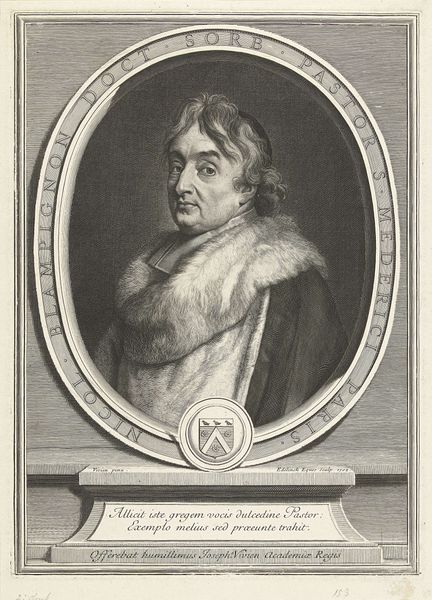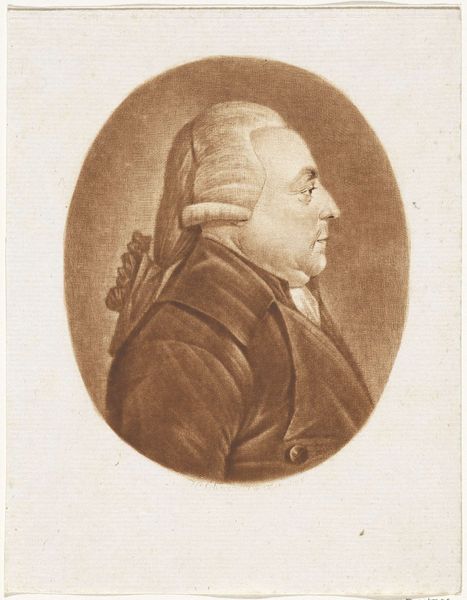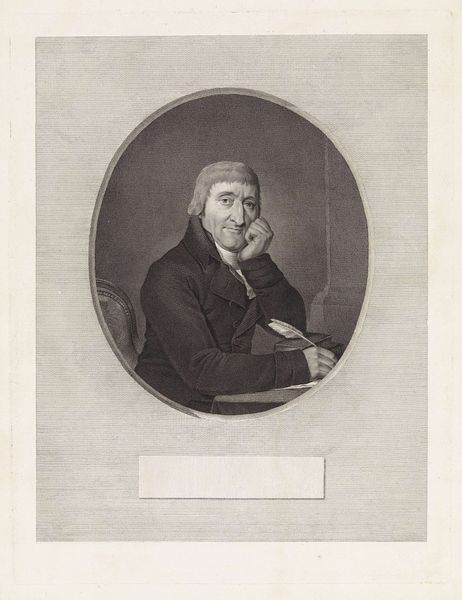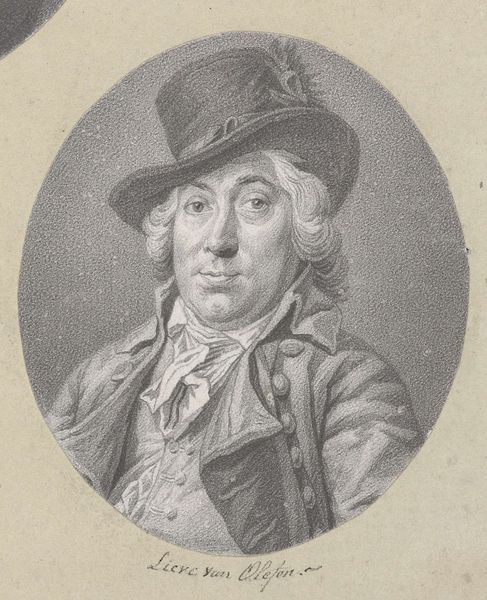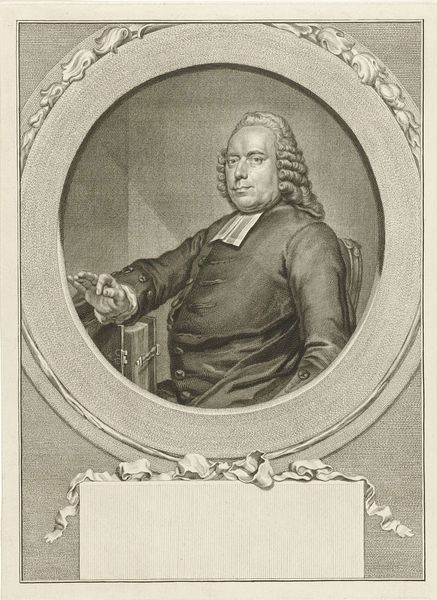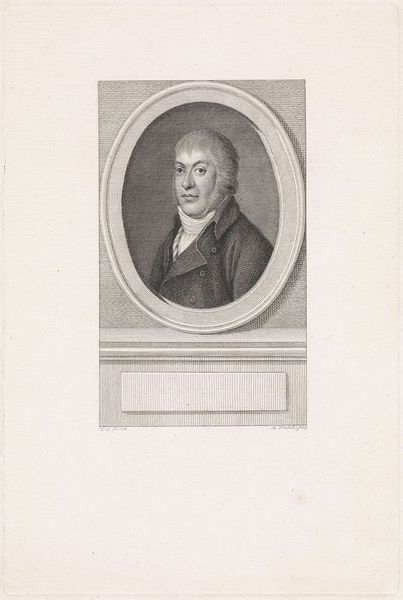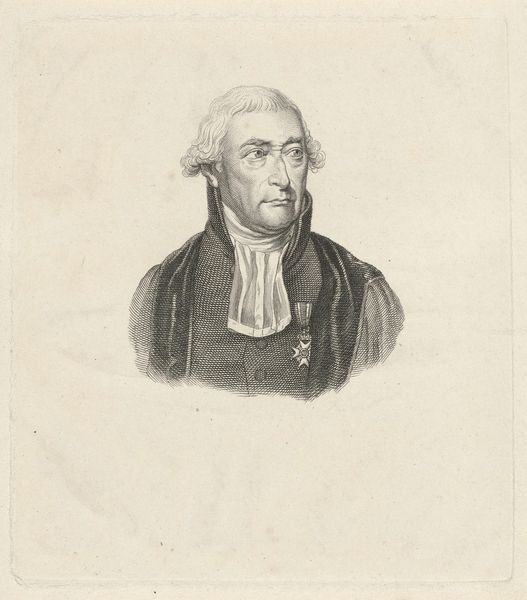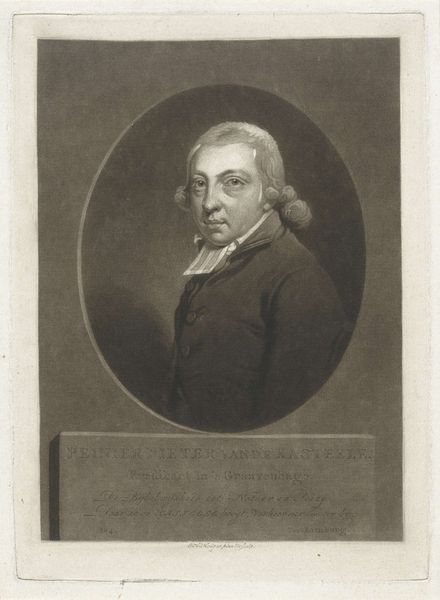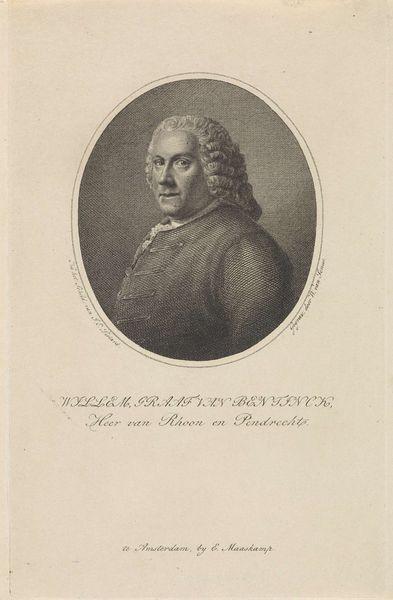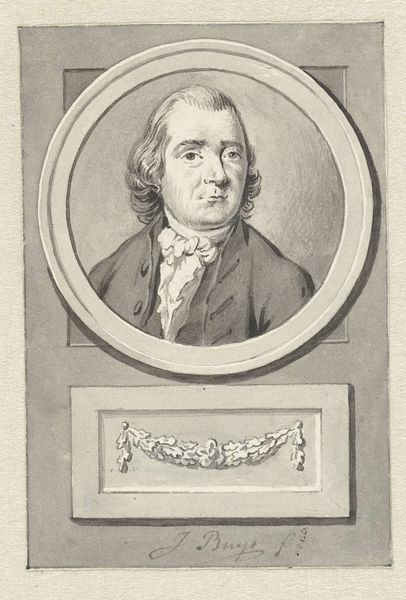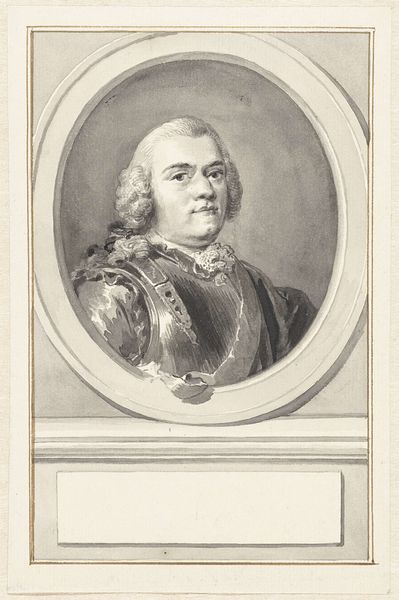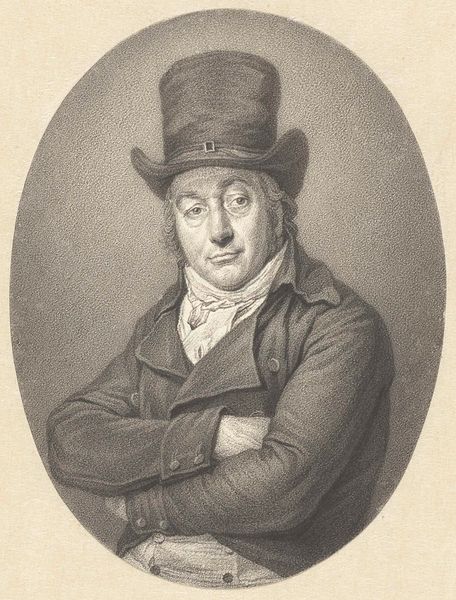
print, paper, engraving
#
portrait
#
baroque
# print
#
figuration
#
paper
#
portrait reference
#
engraving
Dimensions: height 244 mm, width 174 mm
Copyright: Rijks Museum: Open Domain
This is Pieter Schenk’s “Portrait of Johann Dietzen,” made in Amsterdam sometime between 1670 and 1711 using the technique of mezzotint. Mezzotint is an intaglio printmaking process, meaning the image is incised into a metal plate. In mezzotint, the artist textures the entire plate with a tool called a rocker, creating a dense field of burrs that would print as solid black. The image is then created by selectively burnishing or scraping away the burr to create lighter tones. Look closely, and you can see the velvety texture created by this process. The final print, like this portrait, is valued for its rich tonal range and subtle gradations of light and shadow. Mezzotint was especially popular for reproducing paintings, as its tonal qualities lent themselves well to capturing the nuances of oil paint. This highly skilled, labor-intensive process elevated printmaking, demonstrating how so-called “reproductive” techniques can attain the status of high art. The material of the print and the process by which it was made are central to understanding its aesthetic value and cultural significance.
Comments
No comments
Be the first to comment and join the conversation on the ultimate creative platform.
